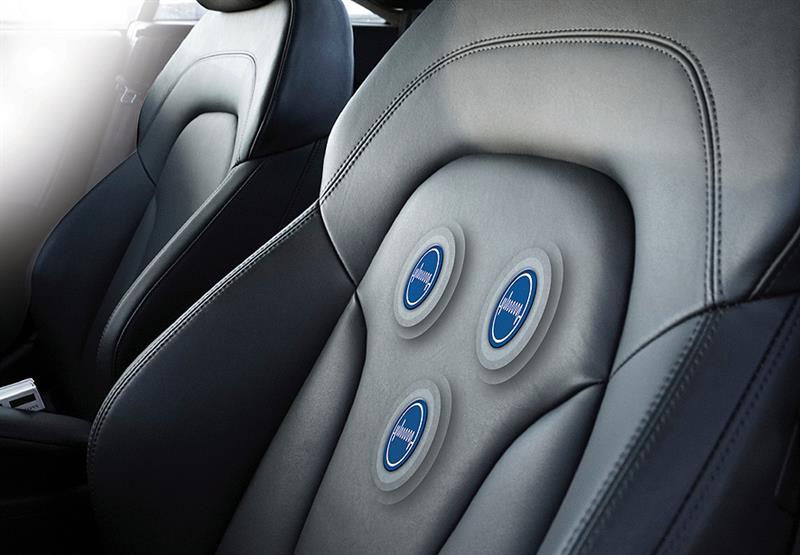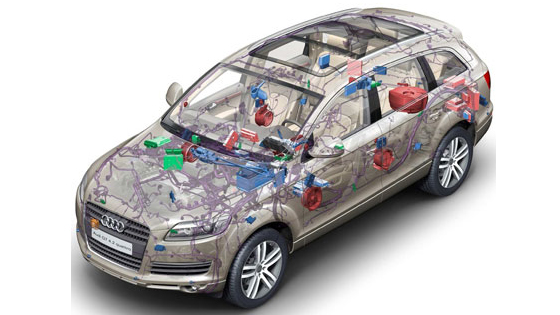According to a new report ‘Global Markets for Automotive Sensor Technologies’, the global market for automotive sensors could be worth more than $26billion this year, rising to in excess of $43bn by 2021.
Sensors are being deployed throughout the vehicle to meet evolving efficiency and security standards as well as address new environmental standards.
While the news may be dominated by talk of the connected car or the roll out of hybrid and electric vehicles, modern automotive vehicles are already getting smarter.
Melexis’ CEO Francoise Chombar says: “As the electronic systems increases, so the number of sensors used in vehicles will also increase. Analysts are predicting that the number of sensors could reach more than 100million by 2020. Currently, each vehicle has from 60 to 100 sensors on board and we can expect that number to rise as cars get ‘smarter’.”
In fact, recent industry figures suggest the number of sensors is projected to reach as many as 200 per car based on current trends.
“Sensors are a vital component within automotive electronic systems and are affecting the whole design process,” Chombar believes. “Increased vehicle production along with further technology developments, changing customer preferences and industry standards, will all combine to increase the demand for automotive sensors.”
While automotive designers are having to address the need for more stringent engine and exhaust management and control – which requires more sensors to deliver improved engine performance – they are also having to look at ensuring increased passenger safety and comfort.
 At this year’s electronica in Munich, Melexis unveiled an infrared sensor array as an alternative to more expensive high-end thermal cameras. The MLX90640 array, a 32 x 24 pixel device, was described as addressing, among other issues, the need for vehicle seat occupancy detection.
At this year’s electronica in Munich, Melexis unveiled an infrared sensor array as an alternative to more expensive high-end thermal cameras. The MLX90640 array, a 32 x 24 pixel device, was described as addressing, among other issues, the need for vehicle seat occupancy detection.
The sensor has a -40 to 85°C operational temperature range and can measure object temperatures of between -40 and 300°C.
“It’s been designed to be very precise. It’s effective and delivers a typical target object temperature accuracy of ±1°C,” explains Damien Macq, sensor business unit manager at Melexis. “The sensor doesn’t need frequent recalibration, which means that it can provide continuous monitoring. As a result, this helps to lower the overall system cost significantly.”
“Occupancy, as a safety issue, is currently not widely addressed in either the European or Asian markets,” says Jürgen Scheele, managing director, automotive sensor products, at Littelfuse. “In North America, industry standards have called for sensors to be deployed to determine who is occupying a seat. By doing that, it means that airbags can be deployed more effectively and more safely.”
Airbag systems have traditionally adopted mass and roller type sensors. However, since the introduction of this technology, more sophisticated sensing systems have been developed, such as electronic crash sensors and sensor microsystems. Radar, infrared and image processing solutions have been developed and are currently being implemented to work with vehicle control units in order to anticipate space and timing in relation to a possible collision.
Smart air bags are able to deploy at different speeds depending on a driver’s or passenger’s weight.
Littelfuse has, for example, developed a tension sensor that can identify the occupant of a seat by monitoring how the seatbelt responds to a body’s movements.
“This sensor technology is of particular value when it comes to children’s seats,” Scheele contends. “In the past, there were safety issues around the early deployment of air bags because an airbag, if deployed incorrectly, can seriously injure or even kill an unbuckled child who is sitting too close to it or is thrown forward during emergency braking.
“Our technology means that bags don’t need to be fully deployed. The growth in safety standards has certainly played an important role in the deployment of more sensors,” he suggests.
When it comes to the deployment of sensors to address safety, one area where real developments are being seen is in response to the increasing number of road accidents caused by inattentive drivers.
“This is becoming a serious issue as it jeopardises both passenger and driver safety,” says Alan Colman, commercial operations director at Plessey. “Monitoring the behaviour of the driver to detect fatigue and distraction could enhance the safety of the driver and passengers.”
In response, Plessey has developed a heart-rate based driver alertness monitoring system.
Capacitive sensing technology integrated into a seat can provide an early indication of drowsiness or health issues
The Seatback system, unveiled at the recent Paris Motor show, features sensors integrated into a vehicle’s seatback to provide early warning of drowsiness or health issues.
“Rather than systems based on eye or head movement, we use capacitive technology based on a good mechanical contact to pick up certain attributes of a person’s ECG,” Colman explains. Electrocardiography or ECG is the process of recording the electrical activity of the heart over a period of time, usually through electrodes placed on the skin.
“What we are interested in is heart rate variance,” says Colman. “That variance is an indication of drowsiness. When you’re awake, your brain will be making demands on the body so, beat to beat, your heart will be irregular. As you become drowsy and more relaxed, so the heart beat becomes more regular.”
The seatback heart rate and breathing recovery system is not only capable of monitoring and recovering a person’s heart rate, but also their breathing signals; detecting breathing rates helps to give another indication of driver alertness.
“The system uses capacitive sensing technology, in non-contact mode, to detect a person’s R peak from the ECG and then to calculate an accurate R-R interval for heart rate and heart rate variance. An R wave represents the electrical stimulus as it passes through the main portion of the ventricular walls in the heart. The walls of the ventricles tend to be thicker due to the amount of work they have to do and, as a result, more voltage is required,” explains Colman.

“Our EPIC sensor technology can be used to provide a low cost, reliable detection system for automotive alertness applications.”
Without the need for direct skin contact and being able to provide accurate R peak signals from a driver’s ECG, EPIC sensor electrodes can be incorporated inside the seatbacks to access the necessary biometric signals.
“This is the first step on the road to a non-contact drowsiness detection system,” Colman suggests.
“If you can detect whether a person is suffering from drowsiness through the drift of the heart rate, you will be able to pre-empt the individual actually falling asleep. Most solutions today – whether that’s monitoring driving technique or using cameras in the cabin to monitor eye movements – are fine. But they only respond when the driver has fallen asleep – and that’s simply too late,” he concludes.







